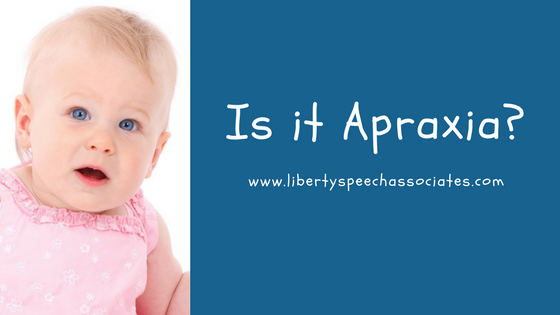
Apraxia, also known as childhood apraxia of speech (CAS), has become the go-to diagnosis for many children in Early Intervention (under 3 years of age). However, many of these children do not have apraxia or are too young to receive a true diagnosis. So what is apraxia?
Apraxia is a motor speech disorder that makes it difficult for a person to coordinate the movements of the mouth for speech. Apraxia can occur in children or adults, but for the purpose of this post, I will focus on CAS. There is some debate over the exact diagnostic features of CAS, but some commonly described symptoms are:
- Inconsistent errors
- Inappropriate prosody
- Vowel errors
- Limited inventory of consonants and vowels
- Increased difficulty with longer, more complex words and utterances

Additionally, children with CAS tend to be “late talkers;” however, late talking in and of itself does not warrant a diagnosis of CAS. As can be seen by the aforementioned symptoms, the characteristics of CAS are described with regards to talking, so if a child is not yet talking or not talking much, a clear diagnosis of CAS cannot be made. In fact, the American Speech-Language-Hearing Association goes so far as to say that “diagnosis below age 3 is best categorized under a provisional diagnostic classification, such as ‘CAS cannot be ruled out,’ ‘signs are consistent with problems in planning the movements required for speech,’ or ‘suspected to have CAS.’
If you have concerns with any aspect of your child’s speech or language development, it is suggested that you contact a local speech-language pathologist so that a thorough evaluation can be completed.
Resources:

